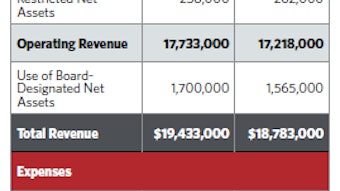Changes Are Coming to E/Ms Starting in 2021
Beginning January 1, 2021, changes to the Current Procedural Terminology (CPT®) code structure for office or outpatient evaluation and management (E/M) services will take effect. The Centers for Medicare & Medicaid Services (CMS) finalized these changes in the 2020 Medicare Physician Fee Schedule final rule.
Beginning January 1, 2021, changes to the Current Procedural Terminology (CPT®) code structure for office or outpatient evaluation and management (E/M) services will take effect. The Centers for Medicare & Medicaid Services (CMS) finalized these changes in the 2020 Medicare Physician Fee Schedule final rule. The new updates include revisions to the CPT descriptors for codes 99201-99215 and documentation standards. While private payers are not bound by CMS policy, they will likely adopt a similar coding structure.
The new documentation requirements will be based on the traditional subjective, objective, assessment, and plan format—in which physicians document what the patient was there for (subjective), what was learned from their history and exam (objective), what the physician assessed to be the problem, and the plan for resolving it.
Major changes include:
- Eliminating history and physical exam as elements for code selection
- Allowing physicians to choose whether their documentation is based on medical decision making (MDM) or total time
- Modifying MDM criteria to move away from simply adding up tasks to focusing on tasks that affect the management of a patient’s condition
Physicians will now be able to choose whether their documentation is based on MDM or total time. The definition of “time” is minimum time, not typical time, and represents total physician/qualified healthcare professional (QHP) time on the date of service. The use of date-of-service time builds on the movement over the last several years by Medicare to recognize the work involved in non-face-to-face services like care coordination. These definitions only apply when code selection is primarily based on time and not MDM.
If MDM is used to determine the E/M code for the outpatient visit, there are a variety of factors one must weigh that differ based on the site of service. If one evaluates a patient in the office setting, the factors in MDM include number and complexity of problems addressed, amount and/or complexity of the data reviewed and analyzed, and risk of complications and/or morbidity of patient management. Factors considered for an inpatient setting include number of diagnoses or management options, amount and/or complexity of data to be reviewed, and risk of complications and/or morbidity.
If time spent on the encounter is used as the determinant for the CPT code billed, the time values will change next year from typical time used to total time used. CPT code 99201 will be deleted, effective January 1, 2021. For new patient codes, times begin at 15–29 minutes for CPT code 99202 and then advance in 15-minute increments with 99205 assigned 60–74 minutes. For existing patients, the time element was removed from CPT code 99211. For CPT code 99212, time for the encounter will be 10–19 minutes. Tenminute increments are used for codes 99213 and 99214. CPT code 99215 has a 15-minute time frame and is utilized for exams 40–54 minutes in duration.
If these time frames do not reflect enough time to describe the encounter, there will be a new code (the current 99xxx is a placeholder) for CPT codes 99205 and 99215 for those reporting based on time. 99xxx will be used in 15-minute increments when the visit takes longer than the times allowed in the new codes. Prolonged services of less than 15 minutes should not be reported. 99xxx can be reported multiple times for the same visit. For example, if an encounter takes 90–104 minutes, 99205 should be reported in addition to 99xxx being reported twice.
CPT code 99358 should only be utilized for non-face-to-face, usually telehealth, encounters and therefore should not be reported on days when other E/M codes are reported. The CPT code 99358 can be reported for visits on days other than when the E/M encounter is reported.
Please visit the Academy’s Coding Corner, https://www.entnet.org/content/codingcorner, for additional updates on the revised E/M codes, as well as the newest coding and reimbursement tools for members.

























